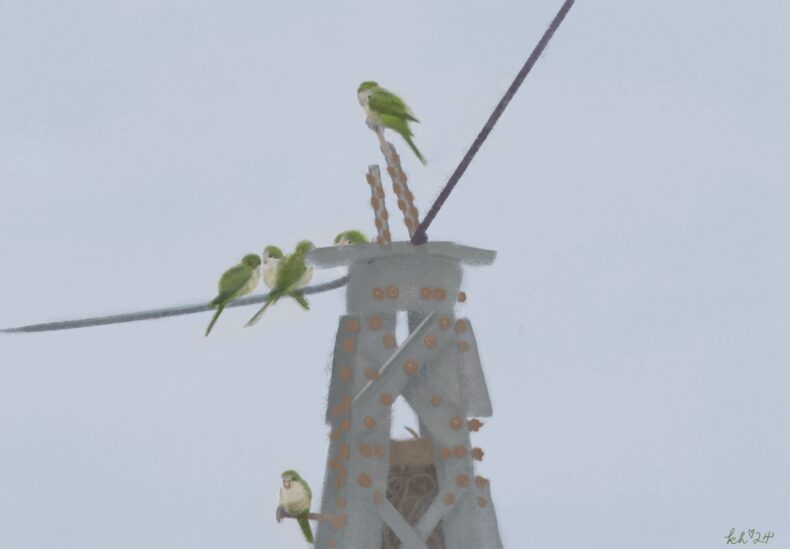
Long before I knew that science writing could be a job, I wrote science poems. A lot of them. Sometimes several in a day. And just as quickly, I abandoned them and moved on to the next vivid factoid in astronomy, anatomy, or animal behavior.
There are hundreds of these dashed-off verses in my files, raw and rough around the edges, forgotten and gathering dust. Once in a while, someone will say something that triggers a flicker of memory. In this case, it was Our Jane sending me an Instagram post about the feral monk parakeets of Chicago.
It would be so easy to write an entire post, or three, about the surreal midcentury explosion of tropical birds in urban Illinois. Instead, I’ll direct you to this truly delightful article, and get to my poetry point.
The Birds of Hyde Park Chicago's winter is nine months long. Wind fit to hollow the cheeks of sweet children spins, screaming, down each vacated street. And screaming, too, from the dips of the satellite dishes, the birds of Hyde Park come home to roost. Each nest is a mess of yesterday's vines, each bird uncanny in a jungle of cold wire. Argentina is thirty worlds away. From the topmost floor of the busiest building you can just see them landing, great feathered limes in a bowl of smoke and slate.
I dashed this poem off in 2009, when the parakeet population in Hyde Park was the greatest in the city. In the intervening time, that flock has dispersed or relocated, as have I. A lot of other things have changed, too; most relevant to you, perhaps, is that I edit my poems (including this one) now.
*
Drawing by me, based on a photograph by Gary Leavens.
Lovely poem. Dallas has a large number of Monk Parakeets and I’ve see them in Austin too. You’ve really captured their essence.
Thanks, Greg! And that’s so cool. Since posting this, I’ve heard from folks in a few parts of the country who have their own local populations.